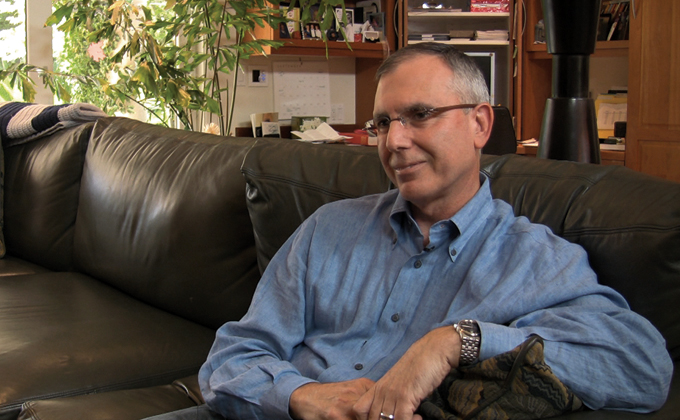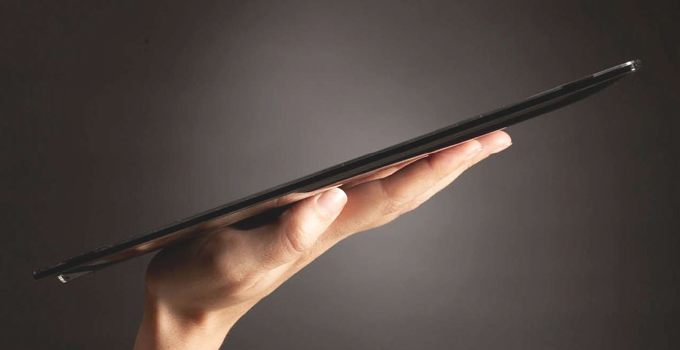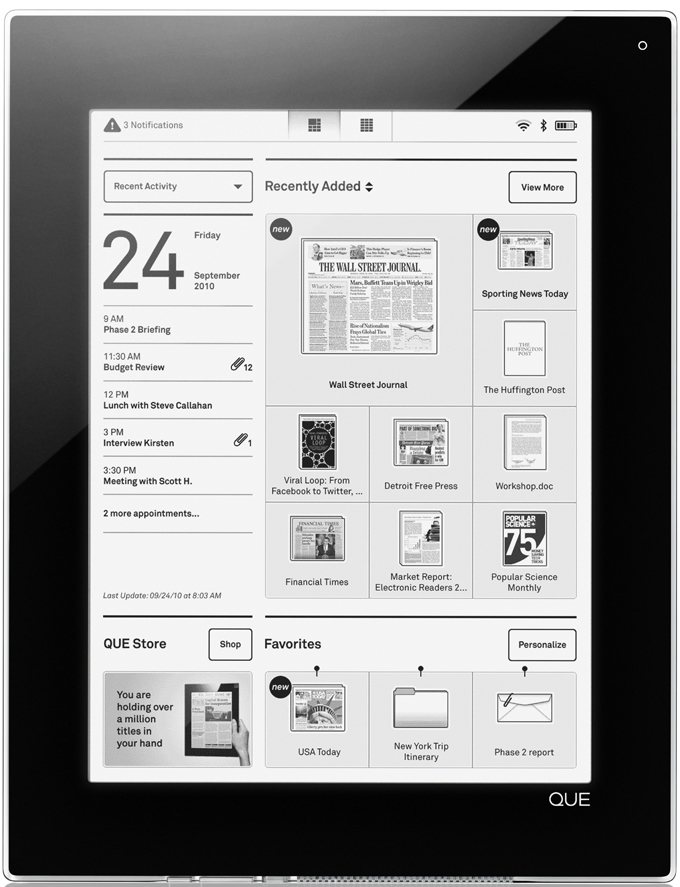This is the sixth interview in Chapter 4 in my new book, Designing Media

Rich Archuleta, September 2009
The QUE proReader from Plastic Logic debuted at the Consumer Electronics Show in Las Vegas in January 2010, using E Ink on a plastic back-plane in a form factor that is similar to a pad of paper. Rich Archuleta joined Plastic Logic as CEO in 2007 to guide the QUE to market. IDEO was responsible for the industrial and interaction design of the version announced at CES, so I was aware of the design approach as it neared completion. I thought it would be an interesting contrast to the early RocketBook, as it had new solutions to many of the challenges identified by Martin Eberhard.

QUE proReader from the side, showing its remarkably slim profile

QUE proReader from the front
Rich Archuleta, commonly known as Arch, thinks that electronic books and readers will gain widespread acceptance when three attributes come together: consensus about the standards for electronic reading material, wireless-communication technology, and new display technologies that are competitive with paper. E Ink technology, for the top layer of electrophoretic material, has done a good job of giving us a nice reading experience for black marks on a white background with a good contrast ratio, but it is normally mounted on a back-plane that is essentially an active matrix display, using silicon and glass technology, making it hard to build something relatively large, such as an 8.5×11" piece of paper. Arch felt that the back-plane from Plastic Logic could enhance E Ink to provide a very natural and comfortable reading experience, so he decided to leave his post as Senior Vice President and General Manager at Hewlett-Packard in order to become CEO of Plastic Logic in 2007. But the progress toward commercial distribution has been slowed by difficulties in achieving reliability.

Kindle and iPad
Are you wondering whether you want an E Ink reader, like QUE or Kindle, or a tablet like the iPad? The answer should probably depend on what you want to use it for. The Kindle, on the market since November 2007, launched with an E Ink display that I find almost as pleasant to read as paper, even if the unit is small and without quite as much contrast. I wonder if Martin Eberhard is right that people will dislike the flash as the screen refreshes enough to prefer a display that is more like a computer screen. The Apple iPad is demonstrating the value of a full-color LCD display with video capabilities and a touch interface. Perhaps Arch will be proved right about the drawbacks of LCD displays?
My guess is that if you are reading a book that is mostly monochrome text, the Kindle wins, but if you want to enjoy the richness of a magazine, fully illustrated book, or movie, the iPad will be markedly better. I expect that the main battle for domination will be between Amazon and Apple, not so much due to the designs of the physical devices as to the attributes of their respective business systems. Amazon can offer the best library of titles, whereas Apple can offer the connection to the iTunes and app stores. Perhaps there will also be room in this expanding segment for innovative designs like the QUE.